Last Updated on July 15, 2024 by Emmanuel
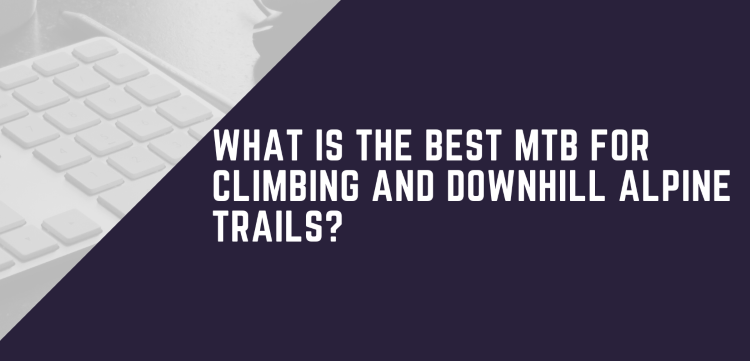
Many riders want to know the best mountain bikes for climbing and downhill alpine trails, so we feel compelled to share an article discussing the topic.
We will show you the criteria for choosing a good climbing and downhill bike and give a few samples of the best ones.
In addition, we will show you an excellent place to pick high-quality bicycles online, whatever your riding style and budget.
Table of Contents
How to choose a good climbing and downhill mountain bike?
Below are a few tips to use when picking a suitable mountain bike for climbing and downhill:
1. A lightweight frame.
A frame is essential when choosing an appropriate bike for climbing and downhill.
Picking a bicycle with a lightweight frame enables you to go fast, but it also depends on the bike’s ability to transfer power to the pedals.
According to cycling experts, the lighter the bike is, the easier it is to pedal and ride.
It is better to pick a lighter bike as a downhill rider because you can control it more easily when you hit the big drops and jumps.
Such a bike is also less likely to get thrown off course by rough terrain, making the lightweight frame the best option.
2. Suspension forks.
The type of suspension fork is another thing to consider when choosing a mountain bike because it makes the ride much smoother.
A suspension fork is handy on rough terrain where it absorbs shocks from bumps and roots, resulting in a comfortable ride.
You can pick an MTB with light and adjustable suspension forks, but it requires more maintenance than coil forks.
Coil forks are heavier, more durable, and require less upkeep. Ask the retailer for help if you can’t determine the best fork type.
Another tip for knowing the best suspension fork types is reading the user’s reviews online.
3. A comfortable saddle.
Check your mountain bike’s saddle is not too aggressive for comfortable downhill or cross-country rides.
A more aggressive saddle is suitable if you plan to do lots of climbing; it provides more support and pedaling comfort.
In addition, check the width of your saddle because a wider saddle provides more stability and comfort when pedaling.
A narrower saddle may be the best choice for mountain riders who want to save weight on their bikes.
Experiment with different types and widths of saddles to find the one that provides the best combination of comfort and support for your riding style.

4. Wheels size.
It would help to consider the terrain you plan to ride on and choose your mountain bike’s wheel size accordingly.
A smaller wheel size, like 26″, is suitable for smooth trails, while serious mountain biking requires larger wheel sizes of 27.5″ or 29″.
The larger the wheel, the easier you can roll over obstacles and go faster, but beware that bigger wheels are heavier and more challenging to maneuver.
Decide what works best for your riding style and the type of trails you plan to spend most of your mountain biking time.
RELATED: Why does everyone who uses a bicycle wear a helmet?
5. Types of brakes.
Check if your MTB’s brakes work well to avoid dangers by controlling your speed and stopping power.
Mountain bikes typically use two main brakes: disc brakes and rim brakes.
Many favor disc brakes because they provide more stopping power, and wet or muddy conditions don’t affect them too much.
Rim brakes are less powerful, but you can adjust and maintain them easier than disc brakes.
Choose the brake you like and keep an eye on them by regularly checking for wear and tear.
Also, always ride within your limits and avoid pushing yourself beyond what you feel comfortable with.
6. The budget.
Consider the budget you are ready to devote to your new mountain bike because they are not all designed equally.
A quality mountain bike typically costs $3,000 to around $5,000 and beyond, depending on everyone’s financial ability.
However, you can always find a less costly option that will not last long or empower you to hit all terrain comfortably.
If you need a high-end one, many brands such as Giant, Specialized, Santa Cruz, and the like design them, but they are more expensive.
Later, we will show you a retailer whose online store centralizes all types of bicycles from popular manufacturers.
The best mountain bikes for climbing.
1. Stance (Giant).
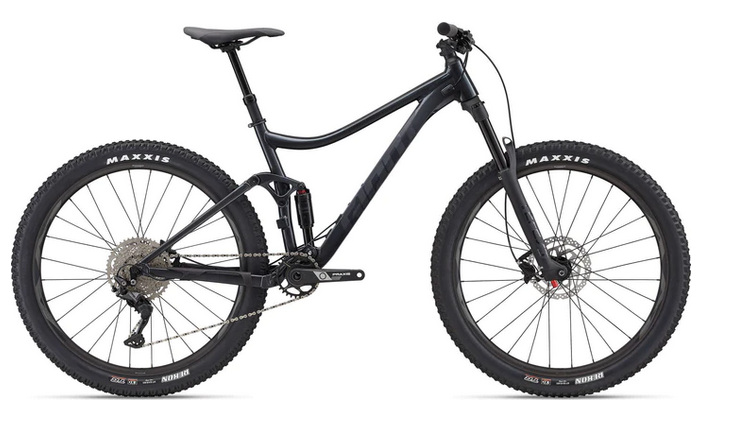
Key features.
| Frame | ALUXX-Grade Aluminum. |
| Fork | Giant Crest 34 RCL, 130mm. |
| Rear shock | Suntour Raidon R, 184.15/44.45. |
| Wheels size – Tires | Maxxis Recon Race 27.5×2.6 WT. |
| Saddle | Giant Romero. |
| Brakes | Shimano BR-MT200, hydraulic. |
| Price | $1,800 |
Description.
Stance is an MTB manufactured by Giant to tackle the trail and confidently explore new remote areas.
It has smooth suspension and grippy big-sized tires to gobble up the roots, ruts, and rock with control and traction.
This mountain bike has 27.5+ wheels and tires to add traction and stability while soaking up bumps.
In addition, it features a flex-point single-pivot rear suspension setup coupled with a lightweight aluminum frame to improve your trail riding.
2. Anthem 29 2 (Giant).
Key features.
| Frame | ALUXX SL-Grade Aluminum. |
| Fork | RockShox Recon Silver RL, 100mm. |
| Rear shock | RockShox Deluxe Select+, RT, Solo Air, 165/42.5. |
| Tires | 29×2.35 (front) and 29×2.25 (rear). |
| Saddle | Giant Contact (neutral), UniClip accessory mount. |
| Brakes | Not specified |
| Price | $2,485 |
Description.
Anthem 29 2 is an MTB designed by Giant with an ALUXX SL aluminum frameset of 100mm upfront suspension travel and 90mm rear.
Giant has equipped this MTB with 29er diameter wheels and a Maestro suspension system, enabling you to conquer technical XC terrain.
This mountain bike also has tubeless tires for added riding control, efficiency, and experience on technical terrain.
Moreover, it has a progressive frame geometry, making it agile and enabling you to ride fast on climbs and descents.
Its other essential components are a lighter upper rocker arm stronger than aluminum and a trunnion-mount shock for smooth pedaling.
3. Hightower AL D (Santa Cruz).
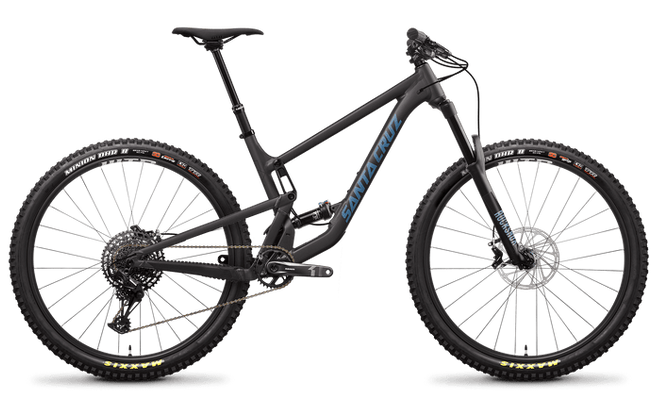
Key features.
| Frame | Aluminum 29/27+ 145mm Travel VPP. |
| Fork | RockShox 35 Gold RL, 150mm, 29″. |
| Rear shock | SRAM SX Eagle, 12spd. |
| Tires | Maxxis Minion DHR 29″x2.4″ front and rear. |
| Saddle | WTB Silverado Comp Saddle or WTB Volt. |
| Brakes | SRAM Guide T. |
| Price | $3,700 |
Description.
According to Santa Cruz, Hightower AL D is one of its best last innovations with adjustable geometry and lower-link mounted shock.
A suspension lower-link-mounted shock enables this MTB to mop up bumps of all sizes while maintaining the progressivity typically reserved for high-end bikes.
The Hightower AL D also features 140mm of rear travel, a 150mm front end, and a slacker 65-degree head tube angle.
Besides, Santa Cruz has equipped this MTB with a bonus disc to heighten your riding experience on tricky tech trails.
Its other top components are composite chassis tracks that empower you to maintain a line on all trail surfaces and react in all directions.
It also has a place to range a water bottle, a noise-canceling chainstay protector, a tailgate shuttle guard, a downtube protector, a shock fender, etc.
RELATED: Why are motorcycle jackets so expensive?
4. Wild FS H20 (Orbea).
Key features.
| Frame | Hydroformed Alloy 160mm. |
| Fork | TK Crown adjust Q15x110 Solo Air 160mm. |
| Rear shock | Fox Float DPS Performance Trunnion 3-Position Evol LV. |
| Tires | Maxxis Minion DHF 2.60″ 120 TPI FB 3C. |
| Saddle | Selle Royal Vivo. |
| Brakes | Shimano M420 Hydraulic Disc. |
| Price | $6,800. |
Description.
According to Orbea, the idea for designing this top-quality mountain bike was to enable the owner to regain control of the wild.
You can load your pack whenever you want and pedal through all terrain to discover new adventures.
This high-end and fun machine will enhance your riding skills and empower you to push the limits to conquer steep climbs.
The Wild FS costs $ 6,800, but it is worth it because this bike will revitalize your riding while you enjoy new destinations.
The best mountain bikes for downhill.
1. Intrigue Advanced (Liv).
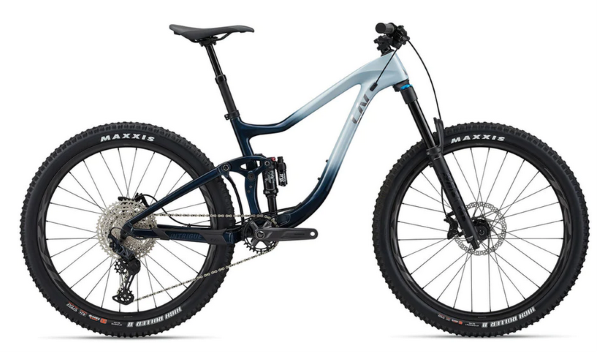
Key features.
| Frame | Advanced-Grade Composite front triangle, 140mm. |
| Fork | Fox 36 Float Performance, 150mm. |
| Rear shock | Fox Float X Performance 185/52.5. |
| Tires | Maxxis High Roller 27.5×2.5WT, 3C, EXO, TR, Tubeless. |
| Saddle | Liv Sylvia. |
| Brakes | Shimano BR-MT520, hydraulic. |
| Price | $3,900 |
Description.
We recommend this bike to women who need an MTB to rip through backcountry singletrack or any other terrain fearless.
Its geometry and ultra-weight frame make it stable and capable of tackling any terrain.
Intrigue Advanced by Liv also comes with 27.5-inch tubeless wheels compatible with up to 2.6-inch tires.
According to Liv, all these designs help you tackle climbing downhill with agility, control, and efficiency.
2. SpeedFox One (BMC).
Key features.
| Frame | Carbon & Aluminium with APS Suspension System. |
| Fork | Fox Float 34 Rhythm Grip, Remote, 130mm. |
| Rear shock | Fox Float DPS Performance Elite, Evol, Remote. |
| Tires | Maxxis Forekaster 29×2.35 TR, EXO. |
| Saddle | WTB Silverado Comp. |
| Brakes | Shimano SM-RT54 Rotors (180/180). |
| Price | $4,500 |
Description.
Another good downhill MTB to pick is the Speedfox, which has a carbon front and aluminum rear frame.
This downhill MTB also has a 120mm APS suspension, enabling you to ride efficiently on chunky terrain.
In addition, it is equipped with a dropper post, a fox shock with remotes, and an SRAM X1 Eagle drivetrain with Shimano brakes.
SpeedFox One by BMC integrates 29er geometry wheels for more stability and efficient riding.
It also features an APS dual-link suspension technology and cable routing.
This bike’s other useful features are integrated protection and a dropper post for a good riding position on climbs and downhills.
3. Tallboy 5 C S (Santa Cruz).
Key features.
| Frame | Carbon C 29″ 120mm Travel VPP. |
| Fork | FOX 34 Float Performance, 130mm. |
| Rear shock | SRAM GX Eagle, 12spd. |
| Tires | Maxxis Rekon 29″x2.4″WT, |
| Saddle | WTB Silverado Medium CroMo. |
| Brakes | SRAM G2 R. |
| Price | $6,200. |
Description.
Tallboy bikes, with a hugely loyal customer base, are among the most popular.
This bike has a long travel geometry with a 65.5-degree head-angle and 120mm lower link-driven VPP suspension to handle high-speed descents and climbs.
Besides, it has 29-inch larger footprint wheels to cover ground efficiently and increase your riding confidence.
A proportional seat tube angle increases the frame size, and you can keep your essentials in a glovebox.
4. Hecker GX AXS 29 (Santa Cruz).
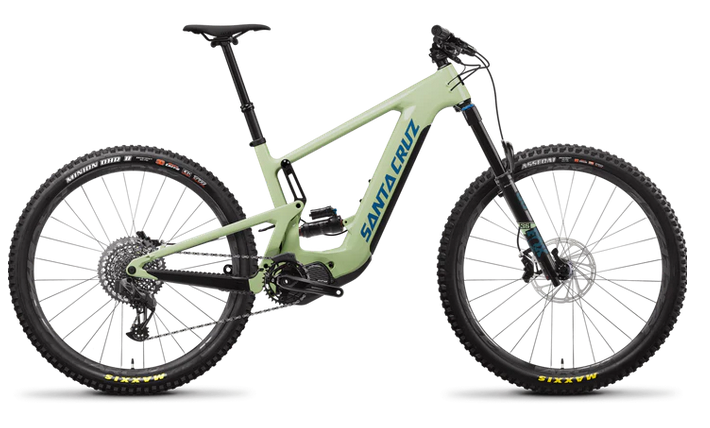
Key features.
| Frame | Carbon C 29 150mm Travel VPP. |
| Fork | FOX 36 Float Performance Elite, 160mm. |
| Rear shock | RockShox Super Deluxe Select+. |
| Tires | Maxxis Minion DHR II 29″x2.4″. |
| Saddle | WTB Silverado Medium Cromoly SL Fusion Saddle. |
| Brakes | SRAM Code R. |
| Price | 11,800. |
Description.
The last mountain bike discussed is the Hecker GX AXS 29 by Santa Cruz, which is currently available in a new version.
This high-end MTB has dual 29er wheel sizes and ride-tuned geometry for the blast downhill, flats, and uphill terrain.
Santa Cruz has also equipped this bike with a 150mm Virtual Pivot Point (VPP) suspension and a 160 mm travel fork for e-bike riding.
Also, this MTB offers glue-like traction on the climbs, making it an ideal partner for tackling vast terrain throughout the day.
Please watch the YouTube video below to learn more about Hecker GX AXS 29.
Hecker GX AXS 29 and other bikes discussed are available at Mike’s Bikes online store.
Mike’s Bikes brand has many active, electric, road, and kid’s bikes, parts, and accessories.
A link under this video will take you to its online store, where you can browse them.
Is enduro better than downhill?
Enduro bikes are lightweight, agile, and the best picks, from downhill racing to cross-country riding, while downhill mountain bikes are much heavier and suitable for riders who want to go fast on steep and rough terrain.
Is a downhill bike good for climbing?
Many ask this question, and the answer is yes and no. For some people, a downhill bike is also suitable for climbing because it is easier to control on steep terrain.
Others prefer a cross-country bike for climbing because of its lightweight and easy maneuverability.
It comes down to personal preference and what you expect from your bike.
Final Thoughts.
That is all we can say about the best MTB for climbing and Alpine downhill trails.
We have discussed the topic in detail to help understand it better and provided samples of the best climbing and downhill bikes.
Don’t limit yourself to these samples because there are many others for different qualities and costs.
Mike’s Bikes’ online store has all types of bicycles designed by famous manufacturers.
Please comment or ask questions at the end of this page if you wish.
We will ensure we get back to you as soon as possible.
Leave a Reply